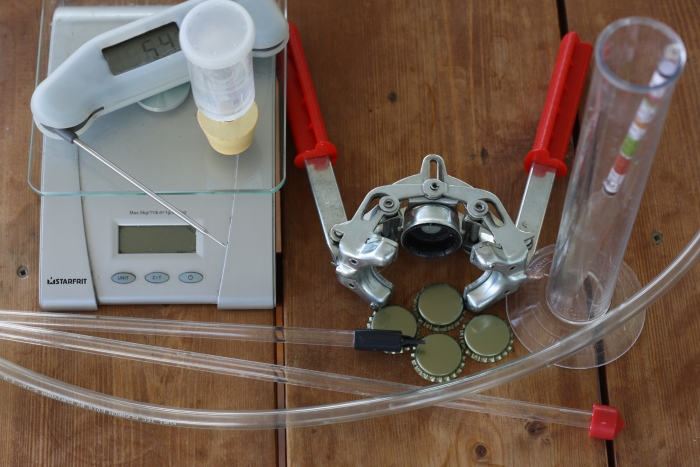This is the first of many articles about brewing your own beer.
This piece will give you a rundown of what you need for gear and what to expect as you begin brewing.
So, you want to start home brewing? The first thing you need above all else is a supportive spouse to accept your newfound obsession. If you are presently single, look for a mate who will be able tolerate your overwhelming need to hide in the garage or basement or wherever your home brewery is for six or more hours at a time. Don’t forget to remind your significant other about all the gear you will be collecting over time. If your partner doesn’t roll their eyes at you and mock you mercilessly, you’re good to move on to the next criteria for home brewing: accumulating gear.
Some people are all-grain brewers who take the cracked malted barley and extract the sugars whereas others buy the extract and skip that first step. With any obsession though, you end up buying way more than you really need, but that’s your problem.
Mashtun – This item is where you steep your grains in hot water for about an hour and then you lauter (drain it) into your brew kettle. I use a 48 litre rectangular cooler with a drainage spout. I simply attached a stainless steel toilet supply line (plastic tubing removed) to some heat resistant tubing and the mashtun was ready to go. This keeps the grains in the cooler and only removes the sweet wort (unfermented barley juice). It holds the temperature quite steady with a couple blankets on top of the tun.

Thermometer – This is one item that I didn’t skimp on the costs. My Thermapen cost me about $100 but it is perfectly calibrated and gives a reading in three seconds. It is very important to have an accurate thermometer because when you’re mashing grains, the difference between a sweet beer and a dry beer is about three degrees Celsius. The thermometer doesn’t really have to be expensive; it just has to be accurate.
Hydrometer – You use this instrument to measure the amount of sugar before and after you ferment your wort to get the alcohol percentage. It is good to calibrate that as well. My hydrometer should read 1.000 in distilled water at 20 C.
Scale – This is also a very handy tool when calibrated properly. I weigh my grains, hops, and even my sugar when it comes time to bottle carbonate. I used to eye out sugar levels but my carbonation levels were very inconsistent, and that’s something that’s easy to control so I bought a five kilogram Star-Frit scale from Canadian Tire for $10 when it was on sale and have been very happy with it.
Boil Kettle/Propane Burner – I have a 48 litre brew pot that is great for 22 litre batches of beer. If I want to brew bigger batches, I would have to move to a bigger brew pot or a risk a boil over and those are messy and annoying. I also use a propane burner but you could always use your stove if you have that understanding spouse who doesn’t mind the smell and the humidity.

Fermentors and Bottling Buckets – I use a combination of plastic buckets and glass carboys. There are pros and cons to both vessels but I have a tendency to use plastic buckets more often. Sure, they scratch easily but they are cheap to replace and you don’t have to worry about them shattering and creating carboy shrapnel if you drop it or pour hot water in it.
Miscellaneous Gear – You also need auto siphons, bottle fillers, airlock with stoppers, bottles, bottle caps, and a bottle capper. I use a butterfly capper and I am happy with it. There are other styles out there, try them and see what you think. Once you get more proficient at brewing, you’ll probably look at getting a grain mill, fermentation control, aeration devices, and a kegging system. Start off simple and see if you enjoy brewing before spending the big bucks.
“Relax, Don’t Worry, Have a Home Brew” (RDWHAHB) is a term coined by Charlie Papazian from the book, The Complete Joy of Home Brewing. There is a level of paranoia that seems to follow newer brewers around, always doubting, always worrying about infection and off-tasting beer. I have been guilty in the past of sampling my beer too early and losing sleep over why it didn’t taste very good. Two weeks later, it tasted fine. One time I freaked out when I saw a dust particle fall into my chilled Belgian Blond. I was certain that beer was infected but it went on to win a silver medal at a home brew competition. I eventually learned to RDWHAHB.
If you have any home brew related questions or topics you’d like me to cover, tweet me at @oldblackbrew.
See you next Thursday.
–
Mark Borowski is a home brewer, and a father, and is looking for a job as a bartender. As he suggests: ask him questions and follow him on Twitter @oldblackbrew
